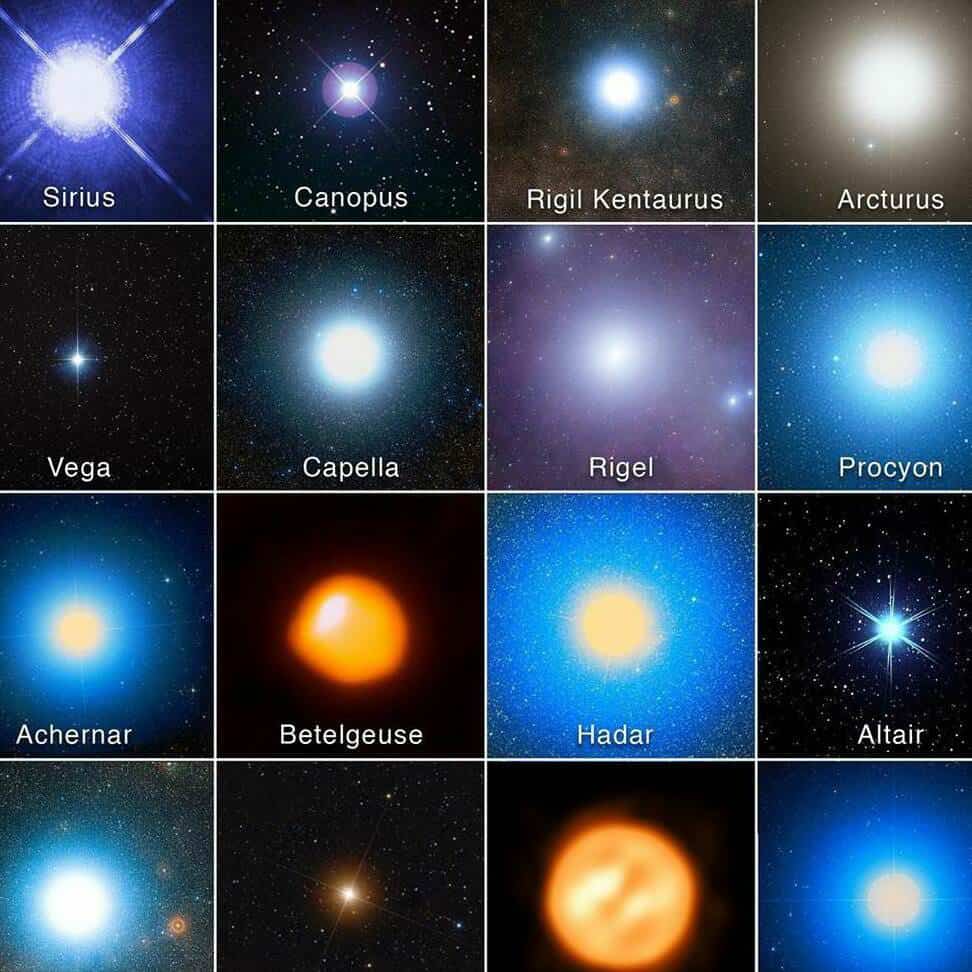
Are you aware of which star is the most radiant in the sky? Frankly speaking, this inquiry is quite fascinating. Because, to an observer on Earth, it appears as one celestial body, but in relation to the entire cosmos, it is an entirely different entity.
The luminosity of stars is characterized by two stellar magnitudes: the apparent and the absolute.

The Most Brilliant Star in the Universe
It has been discovered that among the countless luminous stars, there is one that outshines them all – R136a1. The unique feature of this massive star is its astonishing blue hue, making it one of the rare blue hypergiants. Situated in the Large Magellanic Cloud, in a cluster within the Tarantula Nebula, it captivates scientists and stargazers alike.
Experts have estimated that R136a1 has a radius equivalent to 36 times that of our Sun and a mass of 265 times that of our Sun. Additionally, it boasts absolute magnitudes of -12.5 and apparent magnitudes of 12.77.

The Brightest Star in the Night Sky and Its Location
Among the vast number of stars in the sky, one stands out as the leader in terms of brightness – Sirius. With an apparent magnitude of -1.46 and an absolute magnitude of 1.4, this star shines the brightest.
Interestingly, Sirius is actually a double star system consisting of a white dwarf (B) and a more massive component (A). The mass of Sirius A even surpasses that of the Sun.
Sirius can be found in the constellation Canis Major, where it holds the position of Alpha. Winter is considered the best time to observe this brilliant star.
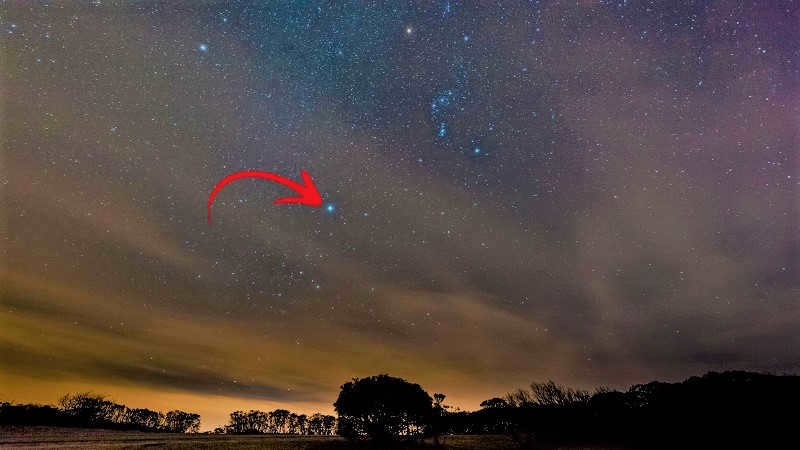
Compilation of Brilliant Stars
Undoubtedly, the sky is adorned with numerous brilliantly shining celestial bodies. They are visible even to the naked eye.
Therefore, we have assembled a list of the most distinguished stars based on their luminosity. Primarily, it includes stars with high luminosity that are relatively closer to our planet.
It’s important to remember that the Earth rotates on its axis, which means that certain cosmic entities can only be observed from the northern hemisphere while others are exclusively visible from the southern hemisphere. Interestingly, Sirius can be spotted from middle latitudes. Nevertheless, irrespective of the positions of these celestial objects, they are visible from the equator.
In fact, here is a list of the most prominent celestial bodies in order of their brightness:
However, the list is not exhaustive. It is worth mentioning that numerous stars are renowned for their high luminosity and radiance. For instance, we have Altair, Aldebaran, Antares, Spica, Pollux, Fomalgaut, and Deneb.
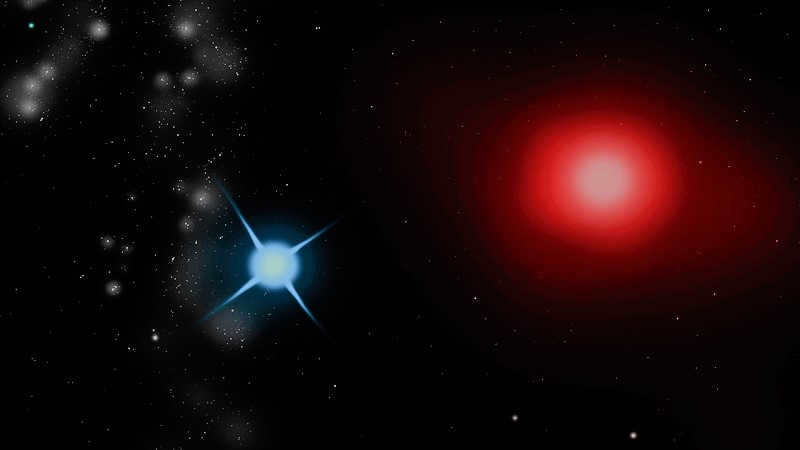



Sparkling Attractions in the Solar System
Indeed, it is not only the radiance of celestial entities that embellish the nocturnal expanse. For instance, the most luminous star in our solar system, the Sun, illuminates the eastern horizon during autumn. Meanwhile, in the southern region, one can observe the crimson gleam of Mars. Additionally, during the latter portion of the night, our neighboring planet Venus gleams like a radiant beacon.
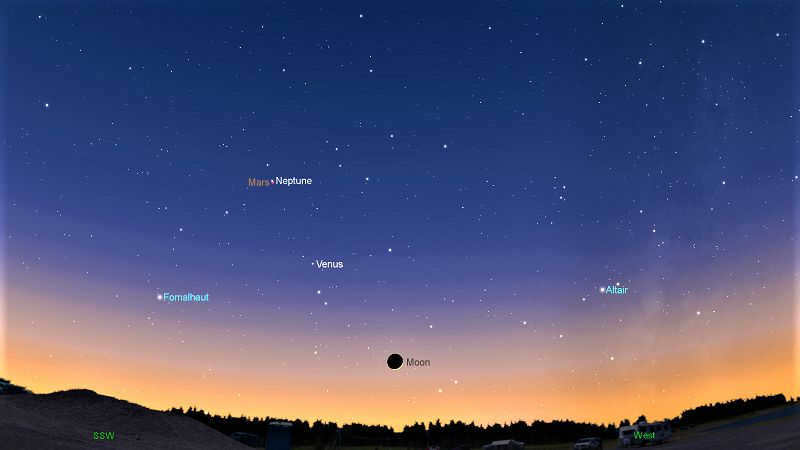
During the daylight hours, our view is confined to a predominantly blue and often overcast sky. However, as night descends, the true magnificence of the sky is revealed to us. There are an abundance of brilliantly shining stars, numbering at least a million.
Throughout history, humans have observed the most radiant stars in various regions of the sky. These stars could be considered our lifelong companions. Furthermore, for thousands of years, people have forged connections between their lives and these stars. They have been used for navigation, fortune-telling, and to explain various phenomena. Additionally, numerous myths and legends have been created around these celestial entities.
Thus, we have now learned the names of the brightest stars and how to locate them. I hope this information has been intriguing!
The main advantage of binoculars over telescopes is that they provide a wider field of view. Some objects may not be fully visible in a telescope as they either don’t fit completely into the eyepiece or lose effectiveness when occupying the entire field of view. This is particularly true for certain star clusters like the Hyades, the Pleiades, and the cluster in the constellation Veronica’s Hair. Binoculars are also more convenient for observing the long and thin tails of comets. Furthermore, binoculars are ideal for studying asterisms and constellations. Lastly, when observing the Milky Way, binoculars are essential.
Many novice stargazers have a relaxed mindset when it comes to binoculars, opting to observe through a telescope. Of course, binoculars cannot compare to a quality telescope in terms of power or image detail: you cannot discern the intricate features on planetary surfaces through them, and faint nebulae are better observed with a larger aperture Dobsonian telescope.
However, the realm of stars is not without its charms! There are numerous double and variable stars in the night sky that can be enjoyed through binoculars. Some of these binaries display stunning beauty against the backdrop of the Milky Way’s stellar fields. Once again, this enchanting beauty can only be fully appreciated by users of wide-angle binoculars.
To help you get started, here is a compilation of 10 wide pairs of stars that exhibit incredible beauty when observed through binoculars!
1. Albireo
Albireo (also known as β of the Swan) is widely recognized as one of the most popular binary stars. Albireo is easily identifiable in the night sky – this star serves as the head of a bird in the constellation Cygnus, and its two components can be distinguished even with 30mm binoculars. Moreover, the striking color contrast between the components never fails to captivate seasoned stargazers. Even in photographs, which often struggle to accurately capture the true color of stars, the Albireo pair remains truly impressive. Needless to say, the visual observation of Albireo is a remarkable experience!
The primary element of the system exhibits a vibrant yellow hue, bordering on orange. Richard Allen, a renowned expert in stellar nomenclature, characterized the shade of this celestial body as “topaz yellow”. Its luminosity measures approximately 3 magnitudes on the stellar scale. Situated 34″ from the main star, a bluish-white companion shines with a brilliance of 5 m. This stark contrast in coloration renders the blue star’s hue significantly bluer compared to other hot stars, including Vega!
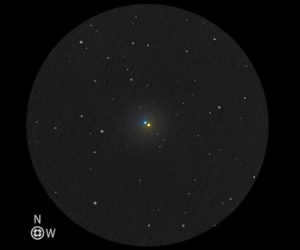
Amateur astronomy enthusiast D. Perez created a sketch of the double star Albireo. The illustration, created by Jeremy Perez, showcases the beauty of the star fields in the Milky Way that serve as a stunning backdrop for this celestial pair. Albireo is visible during summer and fall evenings as well as spring mornings.
2. Alpha of the Hound Dogs
Alpha of the Hound Dogs, also known as the Heart of Charles II, can be found just below the handle of the dipper of the Big Dipper in the night sky. It is easily visible throughout the year, except in late summer and early fall when it appears low on the horizon. The two components of this star pair are closer together than the Albireo components, with a distance of 20″. The host star has a bluish color, while the companion star is yellow.
3. Epsilon Lyrae
For those who own binoculars and want to explore the world of double stars, it is recommended to start with wide pairs. There are several such pairs in the compact and stunning constellation Lyra. One notable pair is Epsilon Lyrae. This double star is one of the most renowned in the entire sky and is particularly popular in the constellation Lyra. It is consistently mentioned in reference books and guidebooks. With a separation of 208″, this pair is wide and easily visible through binoculars (some individuals with exceptional vision may even be able to spot it with the naked eye!). The presence of the beautiful stellar background and the nearby star Vega make Epsilon Lyrae a must-see for any astronomy enthusiast using binoculars!
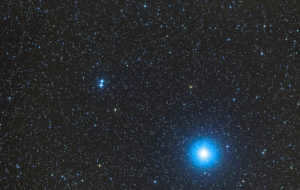
Epsilon Lyrae (center) and the brilliant Vega stand out against the backdrop of the stars in the Milky Way. This is approximately the view that observers with high-quality astronomical binoculars will be able to witness. Image by Alan Dyer.
Epsilon Lyrae is famously known as a “double double” – with a telescope that has an aperture of over 70 mm, each of its components can be easily split into two more. This makes it a star worth revisiting – once you have obtained a telescope.
The second wide double star in the Lyra constellation is represented by the Greek letter δ. Lyra Delta is located at the upper left corner of the parallelogram just below Vega.
The primary red star has a bluish-white companion that is 619″ or 10 arc minutes away. This pairing is purely optical, meaning that the stars are not physically connected but simply appear to be in the same direction. The beauty of this pair is enhanced by its surroundings: the bright stars of Lyra, led by the stunning Vega, can enhance the beauty of any artwork!
Observing Lyra delta, as well as the other double stars in the Lyra constellation mentioned below, can be done in spring during the mornings, in summer at night, and in the evenings during fall.
5. Lyra’s Zeta
Another interesting double star in the constellation Lyra is ζ Lyra. It is located just below the bright star Vega and forms an isosceles triangle with it and the star epsilon Lyra.
The two components of ζ Lyra are separated by an angular distance of 43.8″, making it easy to distinguish them with binoculars. The stars have magnitudes of 4.3 and 5.6. Due to their brightness, the stars should exhibit distinct colors when observed with binoculars or a small telescope. However, there are conflicting opinions regarding the color of the stars in the ζ Lyra pair. Some sources describe them as pale yellow, while others claim they are white. There are also descriptions that refer to the stars as “golden-white,” “topaz and greenish,” or “greenish-white and yellow.”
How would you perceive the colors of the elements in ζ Lyra?
6. Mizar and Alcor
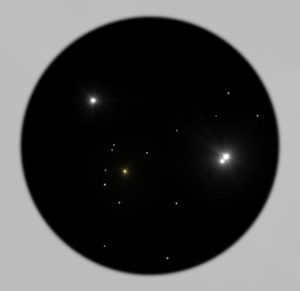
The sketch above shows the double star Mizar on the right, Alcor on the left, and the star Ludovico in the center. The sketch was created based on observations made using a 16-inch telescope. The source of this sketch is Iain P. from CloudyNights.com.
It is worth noting that Mizar and Alcor are one of the most famous double star systems in the entire night sky. These stars are located close to each other in the sky, with an angular separation of up to 12 minutes. They can be easily distinguished from each other with the naked eye.
7. Omicron 1 of the Swan
This star system is not just a double star, but actually a triple star, and the amazing thing is that all three components can be seen with binoculars! It can be found to the west of Deneb, forming a small isosceles triangle with ο² Swan.
What makes this system so remarkable is that all three stars are easily visible, each with its own brightness and color! It looks especially impressive when observed through a small 80mm telescope at 30 ×, but there is still plenty to appreciate when using binoculars! Take note of the different colors of the stars – orange, white, and blue! The beauty of the scene is further enhanced by the stunning star fields surrounding ο¹ Swan, as it lies within the dense region of the Milky Way!
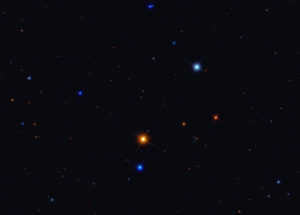
Omicron1 of the Swan is a striking and readily visible triple star when viewed with binoculars. The primary orange star is accompanied by two neighboring stars, one blue (on the left) and the other bluish-white (on the right). Picture: Jerry Lodriguss
8. Iota of Cancer
An attractive binary star situated in the unremarkable spring constellation of Cancer. It may be challenging to observe with the naked eye in urban areas due to light pollution, but it can be easily seen using binoculars (8° higher than the well-known scattered cluster of the Crèche).
The primary star is a yellow star with a magnitude of 4, and it has a bluish companion with a magnitude of 6.8 at an angular separation of 30.7″. The contrasting colors of the pair create a visually striking appearance. Additionally, its proximity to the Crèche cluster can assist in locating ι Cancer in the night sky.

A sketch of the binary star iota of Cancer. Illustration: Jeremy Perez
Contemplating the origins of starlight, one cannot help but feel a sense of awe. For over three centuries, the light emitted by this binary star system has been traversing the vast expanse of space to reach our humble planet! Consider this: the primary component of this binary star system, despite sharing the same color as the Sun, is a colossal star. With a mass only 3.5 times greater than that of the Sun, ι Cancer A dwarfs our own Sun in terms of size, boasting a cross-section 21 times larger and emitting a staggering 200 times more light! Its less massive companion, on the other hand, has yet to undergo significant evolutionary changes. This bluish-white star remains on the Main Sequence, similar to our Sun. The stars within the ι Cancer system orbit around a shared center of mass, completing a full revolution approximately once every 60,000 years.
9. The Dragon’s Nu
Within the asterism known as the Dragon’s Head, there exists a star called ν, often referred to as the “Dragon’s eyes”. The Dragon’s Head asterism is located in the constellation Draco, positioned above the star Vega, and forms an irregular quadrangle composed of 2nd and 3rd magnitude stars. Amongst these stars, ν of the Dragon stands as the faintest. Direct your binoculars towards it!
Upon observation, you will discover that this star is composed of two stars of equal brightness, separated by a distance of 1 arc minute. Those with exceptionally sharp eyesight may theoretically be able to perceive the stars individually and without the aid of binoculars, but certain conditions must be met: primarily, one must venture far from the city and observe during a particularly dark and clear night.
The two white stars of spectral class A in the ν Dragon system are virtually indistinguishable from each other. They are so similar in appearance that they could be mistaken for identical twins. The stars are positioned at a minimum distance of 1900 astronomical units from each other, and they orbit around a shared center of mass once every 44,000 years.
10. Delta Cepheus
It is not widely known that the well-known variable star, delta Cepheus, which serves as the archetype for a whole category of Cepheid variable stars, has a companion star that can be observed in the night sky. This companion star is a faint blue star with a magnitude of 6.3, situated at a separation of 41 arcseconds from the primary star. When viewed together, the pair of stars bears a resemblance to Albireo, although the contrast between the two components is not as pronounced (δ Cepheus has a pale yellow hue).
Surely, this compact collection of binary stars is by no means exhaustive of the possibilities of your binoculars – as I mentioned earlier in this article, there are numerous double and multiple stars that can be observed even with standard 50mm binoculars. Take a look at this compilation, locate the stars you are interested in, and take your time to observe them. You may truly appreciate the beauty of these celestial objects. And from there, this list can serve as a starting point for your future astronomical explorations!
The following table provides an overview of general information about double stars. Notations: m1 and m2 – the magnitudes of the individual components; ρ – the angular separation between the components; Angle – the positional angle, measured in relation to the north direction; in addition, the coordinates and colors of the stars are provided.
| Albireo | 3.4 | 4.7 | 35″ | 54° | 19h 31min | +27° 57′ | orange, blue |
| Alpha of the Hound Dogs | 2.9 | 5.5 | 19.3″ | 229° | 25 56 | +38 19 | bluish, yellow |
| Epsilon of Lyra | 4.6 | 4.7 | 3.5′ | 182° | 18 44 | +39 40 | white |
| Delta Lyra | 4.3 | 5.6 | 10.3′ | 295° | 18 54 | +36 54 | red, bluish white |
| Zeta Lyrae | 4.3 | 5.6 | 44″ | 150° | 18 45 | +37 36 | pale yellow, white |
| Mitsar and Alcor | 2.2 | 4.0 | 11.8′ | 70° | 13 24 | +54 55 | white |
| Omicron Swan | 3.8 | 4.8; 7.01 | 5.6′; 1.8′ | – | 20 14 | +46 47 | orange, blue, white |
| Iota Cancer | 4.0 | 6.6 | 30.6″ | 307° | 08 47 | +28 46 | yellow, blue |
| Nu Dragon | 4.9 | 4.9 | 63.4″ | 311° | 17 32 | +55 11 | white |
| Delta Cepheus | 4.1 | 6.3 | 40.9″ | 191° | 22 29 | +58 25 | yellowish-white, bluish-white |

Space
The Sun, our star, has a mild yellow hue. In general, stars exhibit an incredibly diverse range of colors. There is a particular constellation known as “The Jewelry Box” which showcases a collection of sapphire and blue stars against the backdrop of the dark night sky. Nestled amongst them, at the heart of the constellation, shines a vibrant orange star.
Differentiating Colors of Stars
The varying colors of stars can be attributed to their distinct temperatures. This is the main factor that causes the variation. Light is a form of wave radiation, with each wave having a specific wavelength. The wavelengths of light waves are exceptionally short. To illustrate, consider dividing an inch into 250,000 equal parts (1 inch equals 2.54 centimeters). Only a small portion of these divisions would equate to the length of a light wavelength.
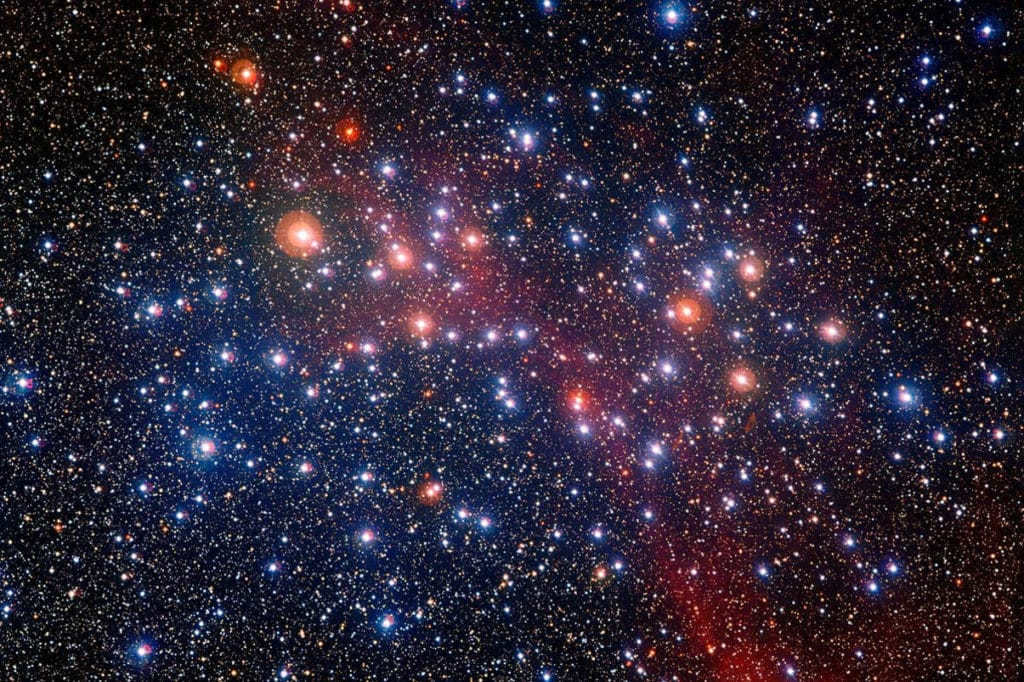
Even the tiniest variation in the size of light waves can have a significant impact on the color we perceive. This is because different wavelengths of light are interpreted by our eyes as different colors. For instance, the wavelength of red light is one and a half times longer than that of blue light. White light is a combination of photons with various wavelengths, resulting in a mixture of different colors.
It is a well-known fact that the temperature of objects determines their color. For instance, if you put an iron poker into a fire, you will observe that it gradually changes its color. Initially, it appears to be red, but as it gets hotter, its hue intensifies, becoming even redder. If the poker could withstand further heating without melting, it would eventually transition from red to orange, then to yellow, further to white, and finally to blue-white.
Consider the sun, for example. It is classified as a yellow star due to its color. Its surface temperature measures around 5,500 degrees Celsius. In contrast, the surface of the hottest blue star reaches a scorching temperature of over 33,000 degrees Celsius.
Physical laws have been devised by scientists that connect temperature and color. When a body is hotter, more energy is radiated from its surface and the emitted wavelengths become shorter. In comparison, the color blue has a shorter wavelength than red. Consequently, if a body emits light in the blue wavelength range, it is hotter than a body emitting red light. Photons are particles emitted by the glowing gases of stars’ atoms. The energy of photons increases with the temperature of the gas, causing their wavelengths to become shorter.
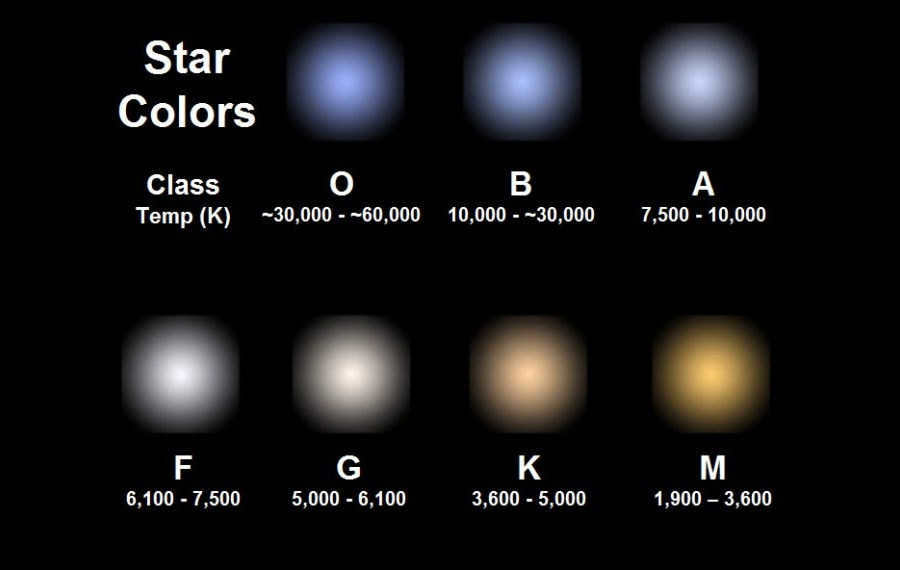
That’s why the most recent and hottest stars emit light in the blue-white range. As stars consume their nuclear fuel, they gradually cool down. As a result, older stars that are cooling emit light in the red spectrum. Stars that are in the middle of their lifespan, like our Sun, emit light in the yellow range.
Our Sun is located approximately 149 million kilometers away from Earth, which allows us to clearly observe its color. On the other hand, other stars are trillions of kilometers or even further away from us. Despite the use of powerful telescopes, it is difficult to determine their exact color. To overcome this challenge, scientists use a specialized device called a spectrograph to analyze the light emitted by stars. This device helps identify the specific spectral composition of starlight.
Estimating the age of a star based on its color
A star’s color can be determined by analyzing the most intense radiation in its spectrum, according to astronomers. By using straightforward mathematical formulas, it is possible to calculate the surface temperature of the star once its color is known. This temperature measurement can then provide insights into the star’s age.
A fascinating video about the hues of stars
In case you come across any inaccuracies, kindly select the text and hit Ctrl+Enter.

In ancient times, Hipparchus, an astronomer from the second century BC, classified celestial objects into six magnitudes. The most luminous stars were referred to as the first magnitude. Through their observations, scientists were able to chart the universe, calculate the orbits and characteristics of planets, and establish patterns. Vega, a prominent star, was designated as having a magnitude of zero. If a celestial body is brighter than Vega, its magnitude is assigned a negative value, and if it is dimmer, a positive value is given.
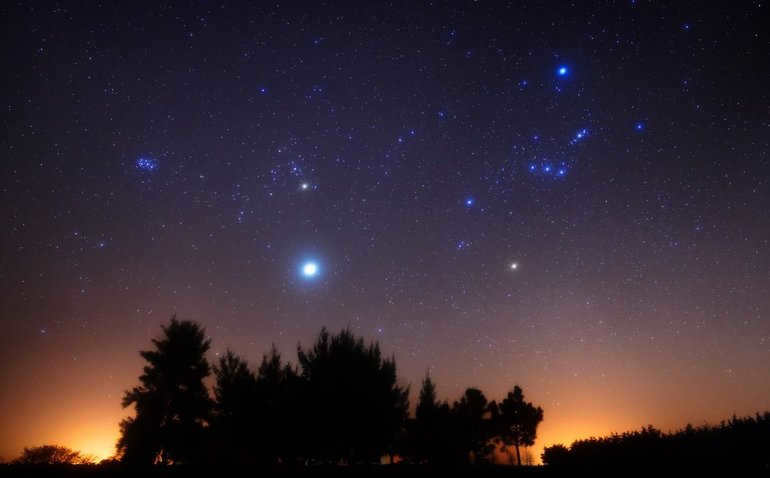
Explanation of celestial objects

The naked eye can observe them from the ground. An observer is presented with a flat sky. In reality, the arrangement of stars in the sky differs, with some stars being further away than others. In the universe, Sirius is known as the brightest star. It is part of the Big Dog constellation and can only be seen in winter at local northern latitudes. Sirius is classified as a double star.
Another remarkable star is Arcturus. This red giant is composed of light elements such as hydrogen and helium. Stars are categorized into 7 spectra or classes based on their temperature and color. Latin letters are used to designate them in astronomy. The colors of stars and their names depend on the following indicators:
Massive blue giants are the epitome of sizzling physiques, while red dwarfs are renowned for their coolness. With the aid of a telescope, one can spot exquisite stars in the nocturnal expanse, each adorned with a distinctive appellation, many of which trace their roots back to the Arabic language.
Polaris is commonly known as the North Star, serving as a reliable guide for sailors due to its immobility and constant pointing towards the north. Some popular names for this navigational star include:
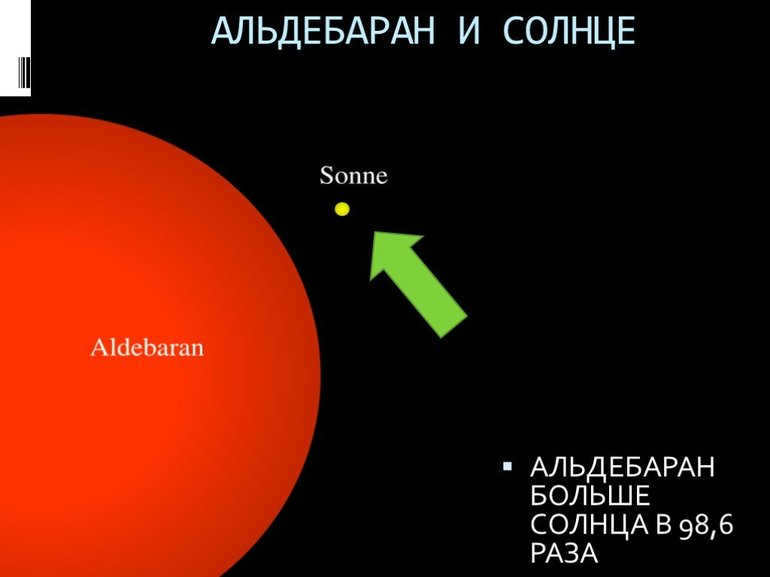

Aldebaran is another bright star visible from Earth. It is located behind the Pleiades cluster and was referred to as the “Eye of the Calf” by the ancient Greeks.
Throughout the day and night, in both hot and cold weather, various celestial bodies make their appearance in the sky. One of the most fascinating is the Big Dipper. At the end of this constellation, you can find Polaris, also known as the North Star. Positioned between the two Bears is the large Dragon constellation. With just a regular pair of binoculars, you can spot the ν Dragon in the night sky.
The megagiant ρ Cassiopeia shines even brighter than the sun. One remarkable celestial formation is Orion. The three kings or Magi are the massive bodies that make up the belt. Cepheus is also part of this chain and it emits its brilliance all year round. Alderamin is a recently discovered polar star located in the M31 nebula. The well-known Arcturus is actually Alpha Volopas, and beyond it lies the Egsy8p7 galaxy. This galaxy is an astounding 13.2 billion light years away from our planet.
List of celestial bodies
A rating of stars based on their brilliance has been created by scientists. The list consists of gas orbs in various shades, including white and yellow. These celestial bodies can be observed in both the southern and northern hemispheres using satellites, telescopes, or other astronomical instruments. Betelgeuse currently holds the tenth spot on this list.

In Greek mythology, the constellation Orion is associated with a hunter of the same name who met his demise because of Artemis. If we were to replace the Sun with Betelgeuse, at its minimum parameters, Betelgeuse would fill the entire orbit of Mars. This stellar body shines brighter than the Sun, with its minimum luminosity exceeding the Sun’s by a factor of 80,000. The distance between these two celestial bodies is approximately 640 light years.
Ranked 9th on the list is the star Ahernar, also known as “the end of the river”. This mythological object is often compared to the Nile and Po rivers. Ahernar is depicted as a blue celestial body that is heavier than our entire solar system. It rotates rapidly, which causes its shape to change over time.
Procyon, the brightest star in the constellation of the Small Dog, is located in the eighth position. According to ancient Greek observations, Procyon rises as high as Sirius, which is believed to be a sign of the flooding of the Nile. Both Sirius and Procyon are classified as double celestial bodies. Procyon is located 11 light years away from Earth.
Giants of white and blue

Ranking seventh is the mega giant Rigel, which shines with a luminosity of 0.12. It is widely regarded as the most dominant among all bright celestial bodies. Within its system, there are three stars. In the subsequent position, we have Capella. The name Capella is derived from Latin and means “goat.” The Romans associated this celestial body with the goat Amalthea, who nourished Zeus-Jupiter. Part of Amalthea’s head transformed into a cornucopia. This yellow giant possesses an apparent magnitude of 0.08.
Capella is known for its variability, hence being referred to as a double star. Coming in at fifth place is Vega, also known as Alpha Lyrae. For several years, astronomers utilized Vega as a reference point on the stellar magnitude scale. Present-day scientists have assigned it a brightness degree of 0.03. Some astronomers argue that Vega has been better studied compared to other celestial bodies.
The complete rotation takes 12.5 hours. The name of the constellation includes the syllable “wagi,” which means “falling vulture.” Arab astronomers perceive the constellation Lyra as a bird of prey. In the fourth position is the star Arcturus, which has a brightness of 0.05. Arcturus is considered the guardian of the bear.
The mystery of the morphology is solved in the following way: Arcturus is the son of Zeus. Arcadus, who was sent by his father to the sky to protect his mother. The nymph Callisto transformed into the Big Dipper. The red star Arcturus is relatively close to Earth. It can be observed in the sky while living in Russia throughout the year.
Initial rankings

Proxima Centauri takes the third position in terms of brightness. Its brightness is measured at 0.27. Centaurus is the constellation that Proxima Centauri belongs to. The second brightest star is Canopus.
Alpha Kiel is known as a guiding star for other spacecraft. This star has a white-yellow color and a brightness of 0.72. It is easily visible from southern Athens. Alpha Kiel has a luminosity of 14,000 times that of the Sun. This makes it the most luminous star among all the celestial bodies within 700 light years of the Sun.
The top spot is taken by Sirius, which boasts a luminosity 22 times greater than the Sun and is situated 8.6 light years away from Earth. Its visible stellar magnitude is 1.47, and its name translates to “brilliant” in Greek.
Sirius, also known as the Dog Star, held a significant place in ancient times. According to Greek mythology, Sirius was the faithful dog or hunting companion of Orion. The Romans referred to it as the “little dog.” In the month of July, Sirius rises with the first light of dawn, signifying the arrival of summer and vacation. This is where the Russian idiom “doggy cold” originated from.
Humanity has been able to classify celestial bodies since ancient times, with the first records dating back more than 15000 years ago. The initial observations led to the identification of 48 constellations, all of which can be seen in the night sky except for Argo. Argo, however, split into four smaller constellations: Corma, Keel, Sail, and Compass.
There have been additional constellations discovered over time:
The most recent discovery occurred in 1763. Scientists have now classified a total of 88 star groups, with 28 located in the northern hemisphere and 45 in the southern hemisphere. It is impossible to observe all 28 constellations in a single night. Their visibility varies, with some shining brightly in winter and others in summer. To observe these celestial wonders, scientists rely on specialized equipment such as optical and radio telescopes, as well as X-ray and gamma-ray detectors that detect different ranges of the electromagnetic spectrum.
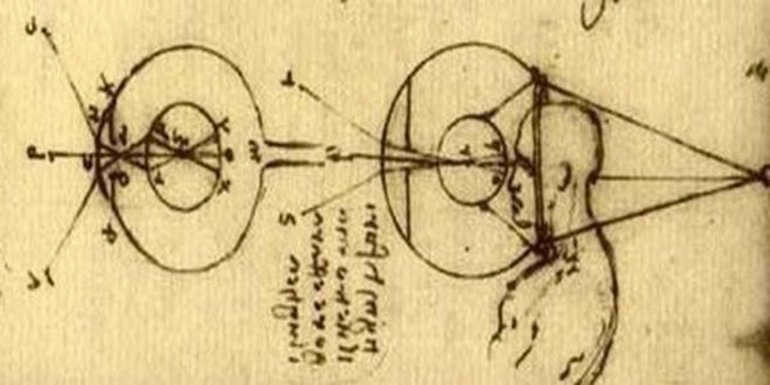
Astronomy employs optical instruments to observe celestial bodies. By utilizing a telescope, one can track distant objects and monitor their movements. The initial rudimentary lensing device was developed during the era of Leonardo Da Vinci. Radio telescopes are utilized for conducting research on celestial objects. These telescopes consist of a radiometer and an antenna as their main components. The radiometer serves as a sensitive radio receiver that can be easily adjusted to different frequencies.
Hipparchus, an astronomer in the second century BC, categorized celestial bodies into 6 magnitudes. The initial magnitude was assigned to the brightest stars in the sky. Scientists successfully constructed a cosmic map, measured and determined the formulas of the planets, and identified patterns. The brightness of Vega was considered as zero. If a celestial body is brighter than Vega, its stellar magnitude is negative, and if it is dimmer, the magnitude is positive.
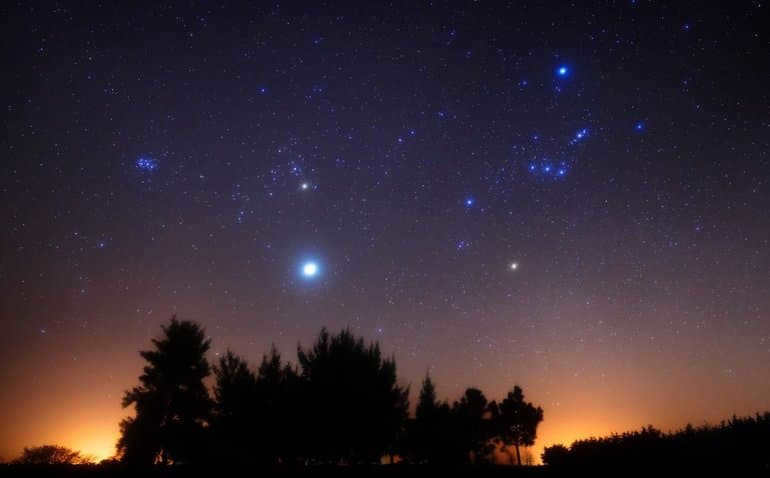
Description of celestial bodies
The arrangement of celestial bodies in our solar system is depicted through 48 ancient constellations. Among these constellations, there are those that are not visible during daylight hours and are located at latitudes of 40 degrees and higher. These constellations can be observed from the northern hemisphere all year round. Some of the prominent non-setting constellations are:

The naked eye can perceive the brightest stars. The observer is presented with a two-dimensional representation of the sky. However, in reality, the stars are arranged in three-dimensional space, with some stars being farther away than others. In the vast expanse of the universe, Sirius holds the title of the brightest star. It is a member of the Canis Major constellation. In regions with northern latitudes, Sirius can only be seen during the winter season. Sirius is known as a binary star system, consisting of two celestial bodies.
To the list of extraordinary luminaries we can include Arcturus. This red giant is composed of light elements such as hydrogen and helium. Stars are classified into 7 spectra (classes) based on their temperature and color, and are designated with Latin letters in astronomy. The colors of stars are determined by the following indicators:
The hottest celestial bodies are massive blue giants, while the coolest ones are red dwarfs. By using a telescope in the night sky, you can discover stunning stars with unique names. Many of these names have Arabic origins.
Polaris is commonly known as the North Star and is highly regarded as a reliable navigation tool for sailors. It remains nearly stationary in the sky, serving as a constant reference point that indicates the direction towards the North. Some popular names for this navigational star include:
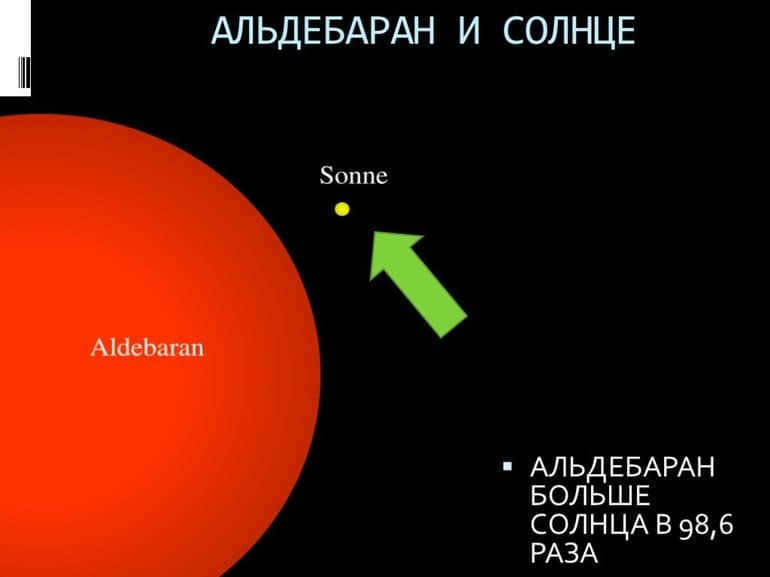
Aldebaran is another celestial object visible from Earth’s surface. It is located behind the Pleiades cluster and was referred to as the Eye of the Calf by the ancient Greeks.
Throughout all weather conditions and times of day, various celestial bodies can be seen crossing the sky. One of the most captivating constellations is the Big Dipper, with Polaris located at its tip. Situated between the two Bears is the expansive Dragon constellation. With a pair of ordinary binoculars, ν Dragon can be observed in the night sky.
List of celestial objects
A rating of the brightness of celestial objects has been compiled by scientists. The list consists of various gas balls in shades of white, yellow, and other hues. These celestial objects can be observed in both the northern and southern hemispheres using satellites, telescopes, or other astronomical instruments. Betelgeuse holds the tenth position on the list.

In Greek mythology, the constellation Orion represents the hunter of the same name, who met his demise because of Artemis. If we were to replace the Sun with Betelgeuse, at its minimum parameters, Betelgeuse would fill the orbit of Mars. Betelgeuse shines brighter than the Sun, with its minimum luminosity exceeding the Sun’s by 80,000 times. The distance between these two celestial bodies is 640 light years.
The star Ahernar, also known as “the end of the river,” takes the 9th spot in the ranking. This celestial body holds a mythical significance and is often compared to renowned rivers like the Nile and Po. Ahernar stands out as a massive blue entity, boasting a weight that surpasses that of the entire solar system. Its rapid rotation adds to its allure and causes its shape to constantly morph.
Procyon, the brightest object in the constellation of Canis Minor, holds the eighth position. The ancient Greeks observed that this celestial body rises before Sirius, which was believed to signal the annual flooding of the Nile River. Both Sirius and Procyon are classified as binary stars. Procyon is located approximately 11 light years away from Earth.

Coming in at seventh place is Rigel, the blue-white mega giant, with a brightness of 0.12. It is widely regarded as the most powerful among all the bright stars. Rigel is part of a triple star system. Next on the list is Capella. The name Capella comes from Latin and means “goat”. In Roman mythology, Capella was associated with Amalthea, the goat who nursed Zeus-Jupiter. Part of her head transformed into a cornucopia. This yellow giant has an apparent magnitude of 0.08.
Capella is considered a variable star, which is why it is also referred to as a double star. Taking the fifth spot is Vega, also known as Alpha Lyrae. For many years, astronomers used Vega as a standard reference for stellar magnitudes. Today, modern scientists assign Vega a brightness level of 0.03. Some astronomers argue that Vega has been more extensively studied than any other celestial body.
It requires 12.5 hours to complete a full rotation. Its designation contains the syllable wagi – “descending scavenger”. The constellation Lyra is perceived by the Arabs as a bird of prey. In the fourth position lies the entity Arcturus with a stellar magnitude of 0.05. It serves as the protector of the bear.
The enigmatic morphology is deciphered as follows: Arcturus is the offspring of Zeus. Arcadus, who ascended to the heavens on behalf of his father to watch over his mother. The nymph Callisto transformed into the Big Dipper. The crimson entity Arcturus is in close proximity to Earth. It remains visible in the sky while residing in Russia all year round.
Initial rankings

Proxima Centauri occupies the third position in terms of brightness. It has a luminosity of 0.27. The name “Centaurus” comes from Latin and refers to a centaur. Canopus is the second brightest star.
Alpha Kiel serves as a guiding star for other spacecraft. This white-yellow star has a luminosity of 0.72. It can be easily seen from southern Athens. Its luminosity is equivalent to 14,000 solar years. With this measurement, it has the highest luminosity compared to other stars within a 700 light-year radius from the Sun.
Sirius holds the first position, boasting a luminosity 22 times greater than that of the Sun, and is situated 8.6 light years away from Earth. Its visible stellar magnitude is 1.47. The name Sirius derives from the Greek word for “brilliant.”
From ancient times, Sirius, also known as the “star of the dog,” held the title of Alpha of the Big Dog constellation. According to Greek mythology, Sirius was the faithful dog or hunter of Orion. The Romans referred to Sirius as the “little dog.” Sirius rises with the rays of the morning sun in July, which the Romans associated with the onset of heat and vacation. This connection gave rise to the Russian idiom “doggy cold.”
Since the dawn of humanity, individuals have had the ability to categorize celestial entities over 15,000 years ago. The initial records detailed a total of 48 constellations, all of which are visible in the night sky except for Argo. Argo has since divided into four smaller groups referred to as Corma, Keel, Sail, and Compass.
Additional constellations have been identified:
In 1763, the most recent celestial body was discovered. Scientists have identified a total of 88 star clusters, with 28 located in the northern hemisphere and 45 in the southern hemisphere. It is impossible to observe all 28 clusters in a single night. These constellations have diverse appearances, with some shining brightly during the winter months and others in the summer. To view these celestial wonders, specialized equipment utilizing various segments of the electromagnetic spectrum is utilized, including optical, radio telescopes, X-ray, and gamma-ray devices.
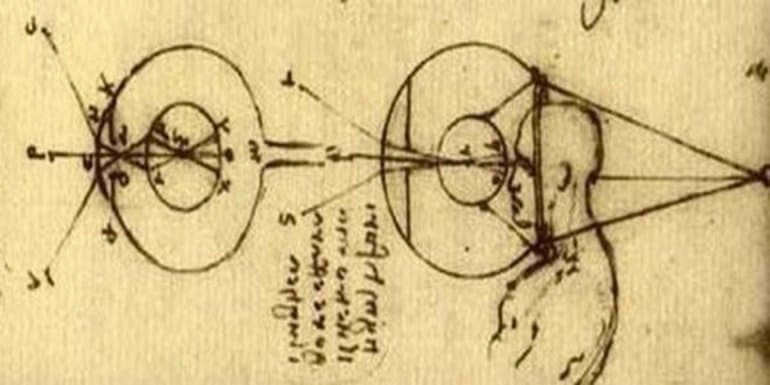
Astronomy utilizes optical tools to observe the celestial bodies in the cosmos. Telescopes enable the tracking and study of distant objects and their movements. The earliest telescope, a simple lens-based instrument, was developed during the time of Leonardo Da Vinci. Radio telescopes are employed for research pertaining to space objects. These telescopes consist of a radiometer and an antenna as their primary components. The radiometer functions as a sensitive radio receiver that can be easily adjusted based on frequency.

